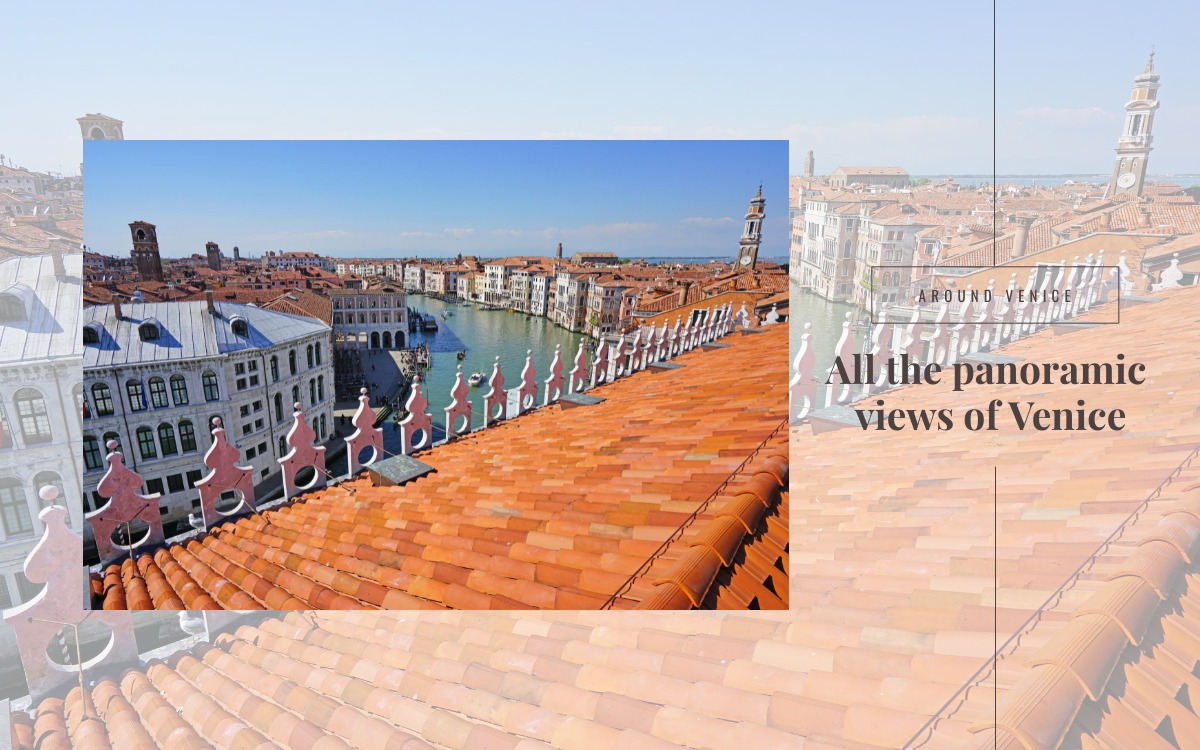Everyone dreams of visiting Venice at least once in their life, discovering its monuments, its churches, its squares and its streets, where history can be breathed deeply and legends endure over the centuries, lending charm to even the smallest hidden corner of the city.
Visiting Venice in a relaxed atmosphere without too many other people around is almost impossible: the only way would be to wander around the lagoon city at night, in an ethereal silence interrupted by the lapping of the water, among the dark streets suggestive of tales of ghosts damned forever.
There is, however, another way to enjoy Venice in a more peaceful climate: just reach the city via the transport company that connects the eastern Veneto region and head towards the many panoramic viewpoints of the UNESCO World Heritage city.
The panoramic viewpoints in Piazza San Marco and surroundings
Piazza San Marco is the beating heart of Venice because it houses some of the symbolic monuments of the city: the Doge’s Palace in sumptuous Venetian-Gothic style, the Basilica of San Marco with its splendid Byzantine mosaics, and the Campanile of San Marco. The latter is one of the best viewpoints in Venice: “El Paron de Casa”, as the citizens affectionately call it, originally had simple defensive functions, later becoming one of the main attractions of the city.
From the top of the Campanile di San Marco you can enjoy one of the most beautiful views of Venice over the square below, the Punta della Dogana, and the Church of S. Maria della Salute, portrayed in the paintings of numerous artists, including William Turner.
Although shorter than the 99-metre Campanile of San Marco, the Loggia of the Basilica offers an enchanting view, not to mention that you find yourself in the company of copies of the Horses of St. Mark brought to Venice by Napoleon (the originals are housed in the Basilica’s Museum).
Before leaving Piazza San Marco, there is another unexpected panoramic viewpoint at the 16th-century Clock Tower, beneath which crowds usually gather and wait to see the Nativity procession appear, with the wooden statues of the Magi that emerge from the Astronomical Clock and parade in a semicircle. A spiral staircase leads to the top of the tower and the beautiful Terrace of the Moors which overlooks the square and the Basilica of San Giorgio Maggiore.
The local water-taxis and water buses can bring you to the islet in front of the Piazza di San Marco, towards the Church of San Giorgio Maggiore. The building dates back to the 16th century, was designed by Palladio, and contains works by Sebastiano Ricci, Palma il Giovane, Jacopo Bassano and, most importantly, Tintoretto. The bell tower of the Church of San Giorgio is one of the highest in the whole city and from here you can enjoy a spectacular panorama, with Piazza San Marco and the Doge’s Palace that seem a beautiful and almost unreachable vision.
Bridges, terraces and legendary towers
Even the many bridges of Venice offer wonderful panoramic points, from the Bridge of Sighs, from which those condemned to death passed, to the Rialto Bridge, which since 1593 has overlooked the sinuous Grand Canal with its elegant arches.
A stone’s throw from this iconic Venetian bridge is the Fondaco dei Tedeschi: created in the 12th century as the hub of German trade with the Serenissima, today it is a beautiful luxury warehouse with a panoramic terrace on the top floor and a sweeping view over the Grand Canal and St. Mark’s Basilica.
Then there is the Accademia Bridge leading directly to Campo Santo Stefano which hosts, along with Campo San Polo, Venice’s picturesque Christmas market: the installations showcase handicrafts such as soaps, scented candles, dolls, ceramics, Christmas decorations, Murano glass objects, and the ubiquitous Venetian masks. A section of the market is given over to the gastronomic specialties of Veneto and the rest of Italy, from panettone to balsamic vinegar, olive oil, nougat, and roasted chestnuts which permeate the air with their aroma.
Returning to the best panoramic viewpoints of Venice, one cannot fail to mention the Scala Contarini del Bovolo, not far from the Rio dei Barcaroli: the wonderful spiral staircase is a perfect harmony of Byzantine, Venetian, Gothic, and Renaissance styles.
It seems to the eye like an addition to the Palazzo Contarini from the late 15th century, probably the fruit of a desire to embellish the building even further.
The legend, on the other hand, tells that the owner of the building, having lost all his other possessions to gambling, managed to keep only the top floor: to reach it he had this staircase built with a panoramic top, whose name refers to the dialect word ‘bovolo‘, meaning snail shell.




